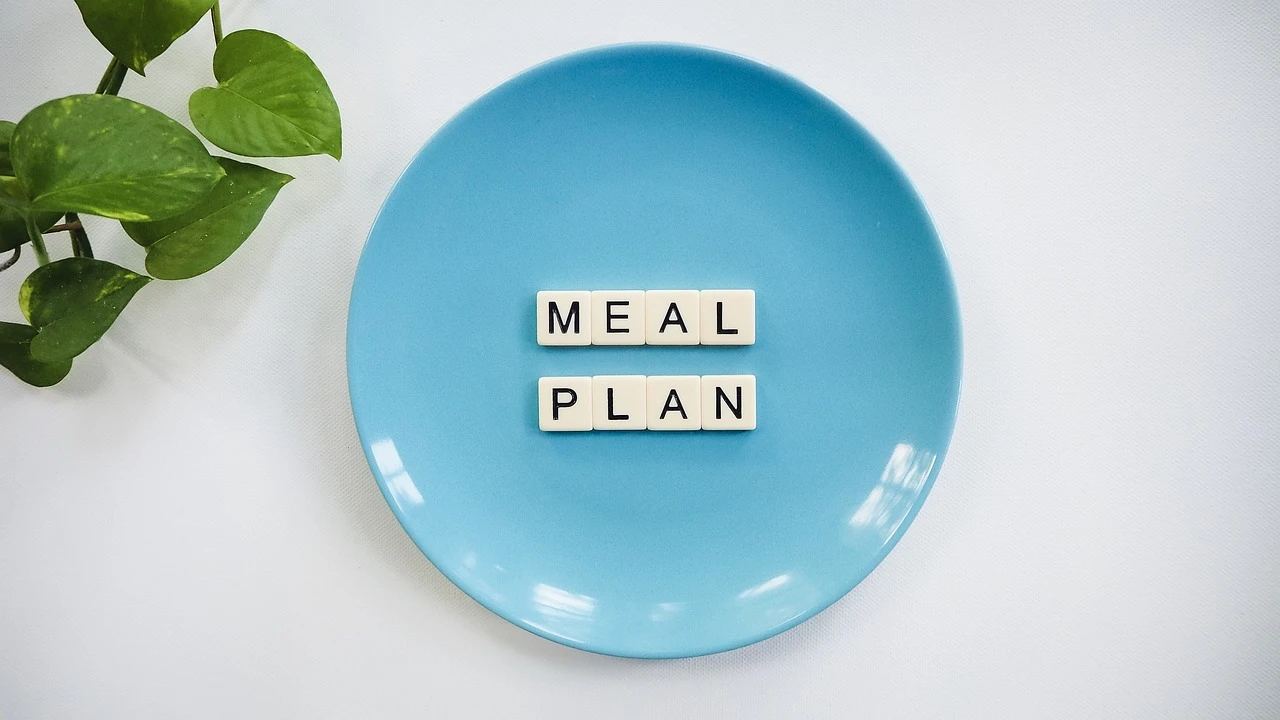Top 10 Nutrient-Dense Foods to Boost Your Energy and Support a Healthy Lifestyle

Discover the most powerful nutrient-dense foods that can enhance your energy levels, improve your overall health, and help you achieve your fitness goals.
Top 10 Nutrient-Dense Foods to Boost Your Energy and Support a Healthy Lifestyle
In our fast-paced world, maintaining optimal energy levels while supporting overall health can be challenging. The solution lies not in expensive supplements or complicated diet plans, but in nature's own powerhouses: nutrient-dense foods. These foods pack maximum nutritional value per calorie, offering an efficient way to fuel your body and support your fitness goals.
Understanding Nutrient Density
What Makes a Food Nutrient-Dense?
- High concentration of vitamins and minerals
- Substantial amounts of beneficial phytonutrients
- Adequate protein, healthy fats, or complex carbohydrates
- Minimal empty calories or processed ingredients
- Natural bioavailability of nutrients
Benefits of Focusing on Nutrient Density
- Improved energy levels throughout the day
- Enhanced recovery from exercise
- Better cognitive function and mental clarity
- Stronger immune system function
- Support for healthy body composition
- Reduced inflammation and oxidative stress
The Top 10 Nutrient-Dense Foods
1. Eggs: Nature's Perfect Protein Package
Nutritional Profile
- Complete protein (6g per egg)
- Rich in choline for brain health
- Contains lutein and zeaxanthin for eye health
- Provides B vitamins for energy metabolism
- Source of vitamin D and selenium
How to Incorporate
- Morning scrambles with vegetables
- Hard-boiled for portable snacks
- Added to salads for protein boost
- As a binding ingredient in healthy baking
- In vegetable-rich frittatas or omelets
Research Highlights
Studies show that whole eggs can increase HDL (good) cholesterol and change LDL particles to a less harmful pattern. Contrary to previous concerns, moderate egg consumption does not increase cardiovascular risk for most people and may actually improve satiety and weight management.
2. Leafy Greens: Micronutrient Powerhouses
Nutritional Profile
- Exceptional vitamin K content
- Rich in folate, magnesium, and potassium
- High in antioxidants including lutein
- Excellent source of vitamin A and C
- Low in calories but high in fiber
Best Varieties
- Kale (highest in antioxidants)
- Spinach (highest in iron)
- Swiss chard (highest in betalains)
- Collard greens (highest in calcium)
- Arugula (unique flavor compounds)
How to Incorporate
- As a base for nutrient-rich salads
- Blended into smoothies (barely noticeable)
- Sautéed as a quick side dish
- Added to soups and stews
- As wraps instead of tortillas
3. Berries: Antioxidant Champions
Nutritional Profile
- Exceptional antioxidant content
- High in fiber (7-8g per cup)
- Low glycemic impact
- Rich in vitamin C and manganese
- Contains anthocyanins and other polyphenols
Best Varieties
- Blueberries (brain health)
- Strawberries (highest vitamin C)
- Blackberries (highest fiber)
- Raspberries (highest in ellagic acid)
- Goji berries (unique amino acid profile)
How to Incorporate
- Added to morning oatmeal or yogurt
- As a natural sweetener in smoothies
- Frozen for a refreshing snack
- Mixed into salads for color and nutrition
- Pureed into healthy dessert toppings
4. Salmon: Essential Fatty Acid Goldmine
Nutritional Profile
- High-quality complete protein (22g per 3oz)
- Exceptional omega-3 fatty acid content
- Excellent source of vitamin D
- Rich in B vitamins, especially B12
- Contains selenium and potassium
Health Benefits
- Reduces inflammation throughout the body
- Supports brain health and cognitive function
- Improves heart health markers
- Enhances skin quality and appearance
- Supports joint health and mobility
How to Incorporate
- Baked with herbs as a main protein
- Smoked salmon with breakfast
- Added to salads for protein
- Made into salmon patties with herbs
- As a protein addition to grain bowls
5. Liver: Nature's Multivitamin
Nutritional Profile
- Highest natural source of vitamin A
- Exceptional B vitamin content, especially B12
- Rich in iron, copper, and zinc
- Contains CoQ10 for energy production
- High-quality protein with all essential amino acids
Consumption Guidelines
- Choose organic, grass-fed sources
- Consume in moderation (3-4oz, 1-2 times weekly)
- Balance with plant foods for complete nutrition
- Consider freezing for 14 days before consuming
- Pair with vitamin C foods to enhance iron absorption
How to Incorporate
- Sautéed with onions and herbs
- As pâté for nutrient-dense snacking
- Added to meat dishes in small amounts
- In traditional recipes like liver and onions
- Freeze-dried supplements for those who dislike the taste
6. Cruciferous Vegetables: Detoxification Supporters
Nutritional Profile
- Rich in glucosinolates and sulforaphane
- High in fiber for digestive health
- Excellent vitamin C and K content
- Contains indole-3-carbinol for hormone balance
- Provides calcium and potassium
Best Varieties
- Broccoli (highest in vitamin C)
- Brussels sprouts (highest fiber content)
- Cauliflower (most versatile for recipes)
- Cabbage (most economical option)
- Bok choy (highest calcium content)
How to Incorporate
- Roasted with healthy oils and spices
- Riced as a grain alternative
- Steamed lightly to preserve nutrients
- Added to stir-fries for texture
- Fermented for probiotic benefits (sauerkraut, kimchi)
7. Nuts and Seeds: Healthy Fat Concentrates
Nutritional Profile
- Rich in healthy monounsaturated and polyunsaturated fats
- Good plant-based protein content
- High in minerals including magnesium and zinc
- Contains vitamin E and B vitamins
- Provides fiber and phytosterols
Top Choices
- Walnuts (highest omega-3 content)
- Almonds (highest vitamin E content)
- Brazil nuts (highest selenium content - limit to 1-2 daily)
- Chia seeds (highest fiber content)
- Pumpkin seeds (highest magnesium content)
How to Incorporate
- As a portable snack option
- Added to salads for crunch and nutrition
- Blended into homemade nut butters
- Sprinkled on yogurt or oatmeal
- Used as crust for fish or chicken
8. Sweet Potatoes: Versatile Carbohydrate Source
Nutritional Profile
- Exceptional vitamin A content (as beta-carotene)
- Rich in vitamin C and manganese
- Contains unique antioxidants including anthocyanins
- Good source of potassium and B6
- Provides complex carbohydrates and fiber
Health Benefits
- Supports eye health and vision
- Enhances skin appearance and health
- Provides sustained energy for exercise
- Supports immune system function
- Promotes gut health through resistant starch
How to Incorporate
- Baked as a simple side dish
- Mashed as a healthier alternative to white potatoes
- Cubed and roasted with herbs
- As "toast" slices for breakfast
- In smoothies for natural sweetness
9. Fermented Foods: Probiotic Powerhouses
Nutritional Profile
- Contains live beneficial bacteria
- Enhanced bioavailability of nutrients
- Partially pre-digested for better absorption
- Rich in B vitamins and vitamin K2
- Provides enzymes that aid digestion
Best Varieties
- Plain yogurt (highest protein content)
- Kefir (widest variety of probiotic strains)
- Sauerkraut (highest in glucosinolates)
- Kimchi (most nutrient diversity)
- Tempeh (highest protein among plant options)
How to Incorporate
- As a daily probiotic serving
- In dressings and sauces for added flavor
- As a tangy side dish with meals
- In smoothies for digestive support
- As a base for marinades
10. Avocados: Nutrient-Rich Healthy Fat Source
Nutritional Profile
- Rich in monounsaturated fats
- High potassium content (more than bananas)
- Excellent source of fiber (7g per avocado)
- Contains vitamin E, K, and B vitamins
- Provides lutein for eye health
Health Benefits
- Supports healthy cholesterol levels
- Enhances nutrient absorption from other foods
- Promotes satiety and weight management
- Contributes to skin health and appearance
- Supports cardiovascular function
How to Incorporate
- Sliced on toast for a nutritious breakfast
- Mashed as a spread instead of mayonnaise
- Diced in salads for creamy texture
- Blended into smoothies for richness
- As a base for healthy chocolate pudding
Strategic Combinations for Maximum Benefit
Synergistic Pairings
- Turmeric + black pepper (enhances curcumin absorption by 2000%)
- Vitamin C foods + iron-rich foods (improves iron absorption)
- Healthy fats + fat-soluble vitamins (enhances absorption)
- Probiotics + prebiotics (supports gut microbiome)
- Complete proteins + complex carbohydrates (balanced energy)
Meal Planning Strategies
- Rainbow principle (eat a variety of colors daily)
- 3:1 plant to animal ratio (for balanced nutrition)
- Two fermented foods daily (for gut health)
- One serving of leafy greens with each meal
- Healthy fat with each meal (for satiety and nutrient absorption)
Practical Implementation
Gradual Integration Approach
- Add one new nutrient-dense food each week
- Replace one processed food with a whole food alternative
- Experiment with new preparation methods
- Focus on enjoyment and flavor, not just nutrition
- Build sustainable habits rather than perfect adherence
Shopping and Storage Tips
- Prioritize fresh, seasonal produce when possible
- Frozen options retain nutrients and reduce waste
- Store nuts and seeds in the refrigerator to prevent rancidity
- Prepare batch-cooked items for convenient access
- Invest in quality storage containers to maintain freshness
Overcoming Common Obstacles
- Time constraints (batch preparation solutions)
- Budget concerns (prioritizing highest impact foods)
- Taste preferences (gradual adaptation techniques)
- Family resistance (incremental introduction strategies)
- Dining out challenges (restaurant ordering strategies)
Conclusion
Incorporating these top 10 nutrient-dense foods into your daily diet provides a foundation for enhanced energy, improved health, and better fitness outcomes. Rather than focusing on restriction, embrace the abundance of these nutritional powerhouses and the benefits they bring to your body and mind.
Remember that consistency matters more than perfection. Even adding a few of these foods regularly can significantly impact your health and energy levels. Start with the options that appeal most to you, and gradually expand your nutrient-dense repertoire.
By prioritizing nutrient density, you're not just feeding your body—you're nourishing it at the cellular level, supporting optimal function in every system. This approach to eating supports not only your current health and fitness goals but builds a foundation for long-term wellbeing and vitality.

